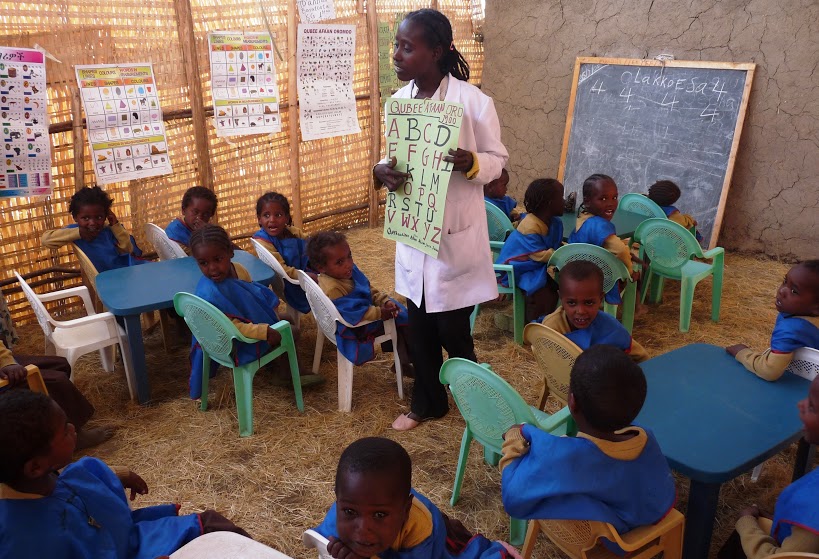
Paul Ehrlich’s 1968 book The Population Bomb (Random House, reprinted hardcover 2000) first predicted massive, worldwide hunger and starvation. It was considered alarmist. Yet today 5% of the world’s population consumes 24% of the world’s energy and an estimated 24,000 children die each day due to acute poverty. (Global Issues). According to the same source, 3 billion people “live on less than $2.50 a day.” 1.7 billion people have no access to clean drinking water. How can grim statistics on global poverty be effectively communicated in a classroom?
Student Awareness of Global Poverty
Most American students cannot conceive of poverty on a global scale. A report from the Economic Research Service (U.S. Department of Agriculture) states that, “Americans spend a smaller share of their disposable income on food than citizens of any other country and choose from an average of 50,000 different food products on a typical outing to the supermarket.” Paul Ehrlich stated that there are more shopping malls in the U.S. than high schools.
Creating awareness can be the most difficult aspect of teaching global poverty. Through technology, it is possible to project images and video of global poverty. When tied to classroom group projects or individual student presentations, they can create a longer lasting impression. Taking students to developing countries is not an option.
However, one high school group visiting Fiji was taken to an impoverished village deep in the rain forest. After spending the day, one high school junior confronted the teacher escort and said, “We have to do something for these people when we get back home!” But these memories of poor villagers without running water and simple diets faded quickly.
Projects, Presentations, and Involvement
Involvement in a particular cause will instill longer-term awareness. This could be class fund raising for a particular area of need, such as was done during the Haiti earthquake. Such causes are also local. In Winston Salem, NC, the “Feed Our Kids Now” program hopes to raise enough money and donated food to provide 85,000 children in the Triad with meals during the summer months. Most of these children eat regularly only because they are helped by the National Free and Reduced Lunch program.
Students can be divided into groups or assigned individual presentations. Topics of research can include:
Lack of accessibility to clean water
Sweatshop child labor
Child prostitution in countries like Brazil and Thailand
Lack of education in under-developed countries
Use of children in warfare as in Africa
Combating global diseases effecting children and lack of immunization vaccines
Abandoned children
Global access to food
Living conditions and refugee camps as in the Sudan
Children born with HIV as in Africa and Brazil
Poverty comes in many forms and many topics that may sound political are actually rooted in poverty. Presentations should include media such as video projects (YouTube has a wealth of such documentary themes), images, and video interviews. The invisible children, the most vulnerable victims of global poverty, can be made visible.
Importance of Teaching Global Poverty
If one classroom goal is to create global citizens, it becomes imperative to teach global poverty. This also encourages a greater sense of stewardship of global resources and the unfathomable waste wealthy nations have long been known for. This is not a politically partisan issue, but a moral issue and one that is rooted in social justice.


